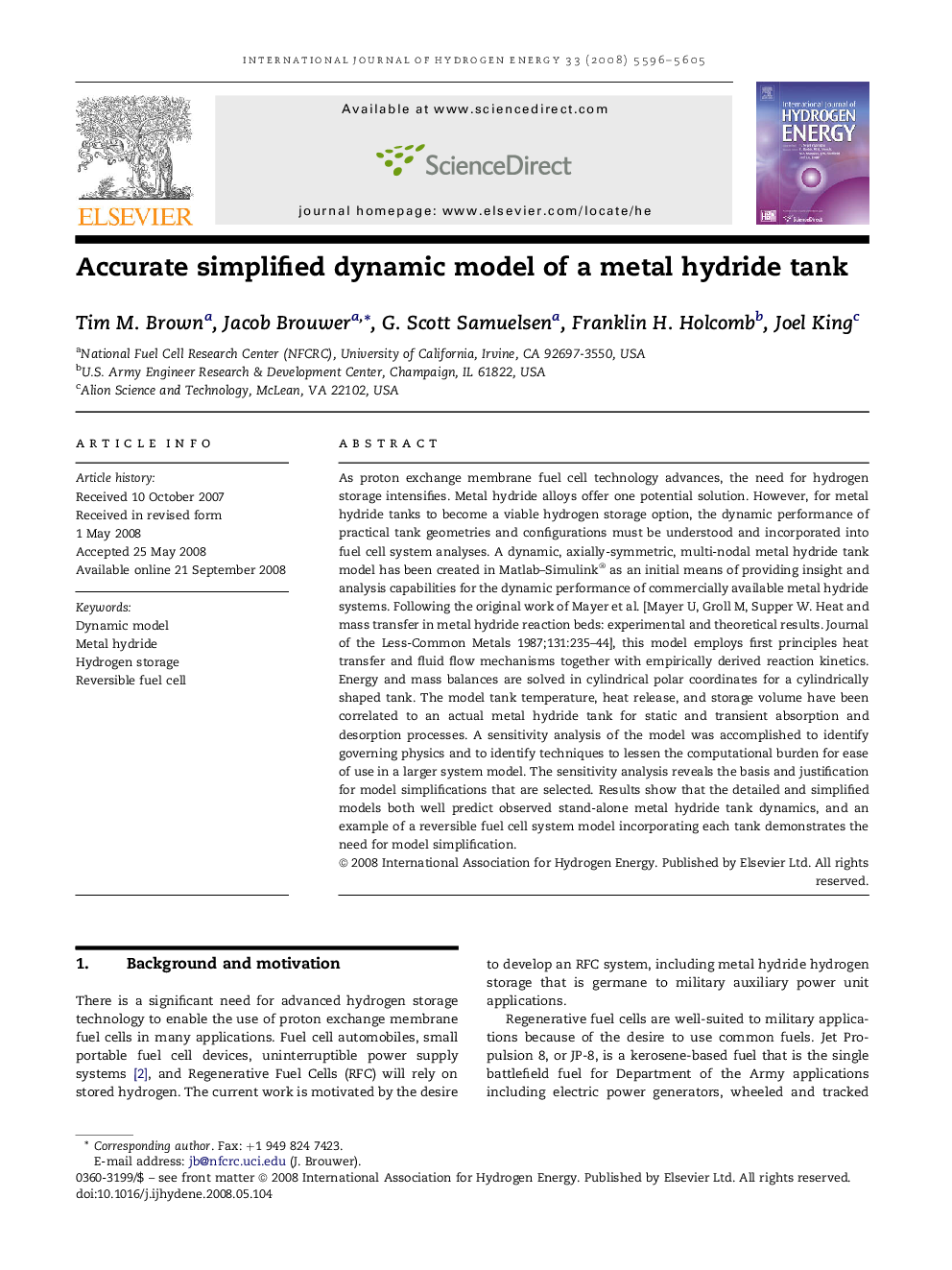| کد مقاله | کد نشریه | سال انتشار | مقاله انگلیسی | نسخه تمام متن |
|---|---|---|---|---|
| 1278497 | 1497646 | 2008 | 10 صفحه PDF | دانلود رایگان |

As proton exchange membrane fuel cell technology advances, the need for hydrogen storage intensifies. Metal hydride alloys offer one potential solution. However, for metal hydride tanks to become a viable hydrogen storage option, the dynamic performance of practical tank geometries and configurations must be understood and incorporated into fuel cell system analyses. A dynamic, axially-symmetric, multi-nodal metal hydride tank model has been created in Matlab–Simulink® as an initial means of providing insight and analysis capabilities for the dynamic performance of commercially available metal hydride systems. Following the original work of Mayer et al. [Mayer U, Groll M, Supper W. Heat and mass transfer in metal hydride reaction beds: experimental and theoretical results. Journal of the Less-Common Metals 1987;131:235–44], this model employs first principles heat transfer and fluid flow mechanisms together with empirically derived reaction kinetics. Energy and mass balances are solved in cylindrical polar coordinates for a cylindrically shaped tank. The model tank temperature, heat release, and storage volume have been correlated to an actual metal hydride tank for static and transient absorption and desorption processes. A sensitivity analysis of the model was accomplished to identify governing physics and to identify techniques to lessen the computational burden for ease of use in a larger system model. The sensitivity analysis reveals the basis and justification for model simplifications that are selected. Results show that the detailed and simplified models both well predict observed stand-alone metal hydride tank dynamics, and an example of a reversible fuel cell system model incorporating each tank demonstrates the need for model simplification.
Journal: International Journal of Hydrogen Energy - Volume 33, Issue 20, October 2008, Pages 5596–5605